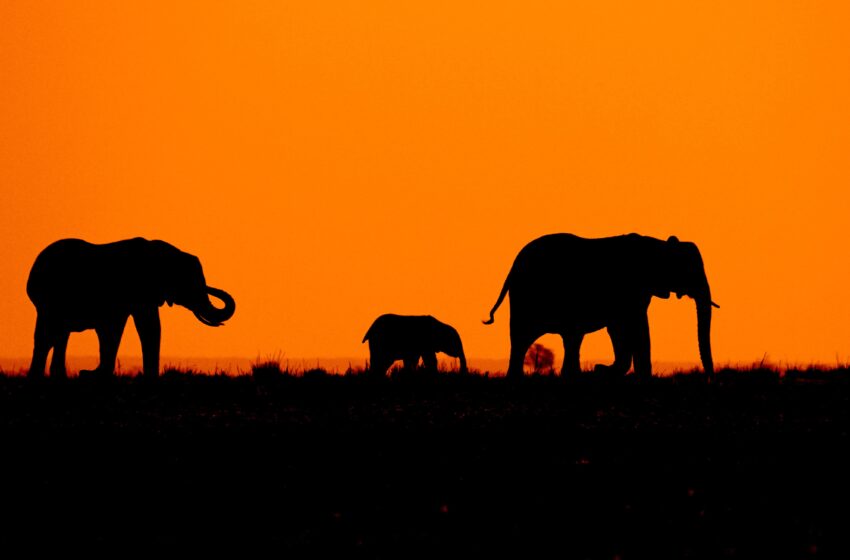
Botswana’s Only Travel Guide You Need For A Great Trip in 11 Easy Steps
- Destinations Africa
Cruisit Team
- June 5, 2022
- 1
- 4691
- 80 minutes read
Botswana’s Background
Once the British colony of Bechuanaland, Botswana changed its name upon independence in 1966. Four decades of civilian rule, progressive social programs, and major capital investment have resulted in one of Africa’s most dynamic economies. Mineral extraction, particularly diamond mining, dominates economic activity. However, tourism is developing as a result of the country’s conservation efforts and huge natural preserves. Botswana has one of the highest known rates of HIV/AIDS infection in the world, yet it also boasts one of Africa’s most innovative and comprehensive HIV/AIDS programs.
Being a landlocked country in Southern Africa, Botswana can prove to be difficult to get to. Thankfully, Namibia, South Africa, Zimbabwe, and Zambia are its neighbors and can be more affordable options to depart from. Of course, that makes sense if you’re already in Africa.
Compared to Namibia, Botswana is considerably different if you have ever been. If haven’t been there, Namibia is nearly entirely a desert country, but Botswana’s landscape is far more diversified, including desert, savannah, wetlands, rocky hills, and two of Southern Africa’s most outstanding tourist sites, the Chobe River and Okavango Delta.
Botswana is divided into three primary areas: The Kalahari Desert is located in the western region of the nation and has a relatively low population. To the north, the Okavango-Chobe region includes the Okavango Delta, Chobe National Park, and Moremi National Park. The southeastern section of the nation, as well as the capital city of Gaborone, has the highest population density.
Tourism and diamond mining have driven the economy in Botswana, making it one of the strongest in Africa. Botswana is an expensive location and less popular than some of its neighboring nations. The nation has kept prices high in order to maintain the area’s biodiversity, yet tourism still brings in money. This country offers those seeking a wildlife safari without the tourist hordes found in many other national parks. The Okavango Delta and Chobe National Park, in particular, are elite and pricey getaways. However, there are several low-cost options available.
Ecotourism is currently the second most important contributor to the local economy, following only the diamond sector. Botswana launched an innovative ecotourism policy in 2002 with the purpose of preserving the country’s natural and wildlife resources. Today, 38% of the country’s land is protected for preservation, not to mention that Botswana’s anti-poaching operations are by far the most successful in Southern Africa. The role of ecotourism in Botswana’s economy is expected to grow further.
There is a good degree of service and substantially less poverty than in the Central African nations for solo visitors combined with a rugged environment that is appealing for adventurers.
The country of Botswana is a less-visited destination due to the single issue you may have: it is pricey, but for good cause.
“Majestic Botswana, overlooked by tourists, full of surprising wildlife encounters only for those who are searching.“
Botswana did not simply abandon mass tourism. It ushered in a new era of totally exclusive animal experiences available nowhere else. The preferred ecotourism paradigm is low-impact luxury resorts, many of which are solar-powered and recycle their own grey water. This is one of the main reasons why it is so pricey.
With majestic resorts and faraway romantic African tented sites, elephants can be seen grazing nearby. These locations, notably in the Okavango Delta and neighboring environs, are both contemporary and troublingly drenched in colonial nostalgia. It will also provide you with a front-row seat to animal spectacles that you can always view at any time, all to yourself. If that sounds appealing to you, then get ready for Botswana.
Backpackers and budget travelers who wish to visit Botswana should not be concerned; you can still explore Botswana on a reasonable budget. Many lodges provide campsites, which you can select with a respected tour operator. Good tour companies include equipment and camping expenses in the trip package. That means you can still visit Botswana in the style that satisfies you without having to save for the next five years.
Botswana is one of Africa’s premier safari destinations, offering some of the best wildlife watching in the world. The animals and national parks in the country draw visitors. The most well-known parks are Chobe National Park, Moremi National Park in the Okavango Delta, and the Central Kalahari Game Reserve. The San, commonly known as bushmen, live in the country.
However, you cannot go to Botswana only for the sake of admiring the scenery. Your main reason for visiting may also be Botswana’s genuine commitment to the environment and conservation, as previously mentioned—thanks to ecotourism, Botswana has been able to transform itself from one of Africa’s poorest areas to one with a strong middle class and an increasing GDP year after year.
The Okavango Delta is unlike any other place on Earth. Huge cats and considerably larger elephants roam free in one of the world’s remaining great natural regions. The delta is associated with abundance, whether in terms of animal numbers, species richness, birdlife, or Biblical-scale floods. It’s also a place of peculiar and unrivaled beauty, with safari chances that seem as endless as the oceans themselves.
The Kalahari Desert, the world’s largest continuous sand expanse, is not your average desert. This is a desert of great variety, from the salt pans of Makgadikgadi in the north to the baobabs of Nxai Pans and the naked beauty of Kubu Island in the south. There are few more beautiful deserts on the planet than the Central Kalahari Game Reserve, with its ancient river basins, flowing amber grass, black-maned lions, and indigenous San people’s shadows.
Self-drive is an option for people who want to experience an African road trip in Botswana. You could also hire a car from one of the neighboring countries, such as Namibia or South Africa, and drive it across the border into Botswana. You must, of course, inform the rental car company and make all essential arrangements for such a trip including insurance coverage. It is also viable to rent a four-wheel SUV for a camping trip in Botswana. Your tour will allow you to explore untamed Africa at your own leisure. By moving from one campground and attraction to the next while listening to lions roar, elephants trample, and hippos submerge in water. Light a fire and gaze at the starry heavens to feel one with the land. If you are brave and feel ready for such an experience, then keep reading to learn more about your visit to Botswana.
- Experience an authentic tribal encounter with Zu/’hoasi Bushmen or San People.
- Try spotting wild dogs! Good luck in your search.
- Take a look at the Delta from above the skies
- Look out for the swimming elephants.
- Take a mokoro to enjoy the stunning sunset views.
- Tladi the Leopard is waiting to meet you at Mombo Camp.
- Visit Victoria Falls for a sunset cruise.
- Cross the Namibian border, into Caprivi for more wildlife encounters.
- In Chobe National Park, you will see more varieties of wildlife than you can count.
- Get a grasp of the Makgadikgadi Pan, one of the largest salt flats in the world.
- Botswana has a thriving economy.
- The country’s primary export is diamonds.
- Botswana is one of the most pricey locations; they follow a high-cost, low-impact plan to maintain their country.
- Wildlife and nature are Botswana’s main attractions for tourists.
- This country has one of the lowest population densities in the world. More than 40% of the area is allocated to animals. That is why it is so serene.
- Botswana’s people are among the most kind and hospitable in Africa. They are also concerned about the environment and the nation.
- Timbuktu is a new website that allows you to choose the lodges you want and view the daily cost so you can plan the best schedule for yourself.
- English, along with Tswana, is the primary language.
- The majority of visitors arrive by plane in Botswana. The primary airport, Sir Seretse Khama, is in Gaborone, and most flights pass through Johannesburg, however direct flights from Cape Town, Harare, and Nairobi are available. Maun is a famous tourist resort with just a few foreign flights. A direct flight may be feasible because Maun is more than 1,000 kilometers from Gaborone and can consume a whole day of overland transportation.
- In Botswana, most instructions are offered in terms of landmarks. Street names and addresses are not easily remembered. Outside of big cities, public transportation is infrequent, although a mix of coaches and combies can carry you throughout most of the country. Hitchhiking is widespread in areas where public transit is unavailable. When hitchhiking, use caution because this mode of transportation can be risky.
- The official languages of Botswana are English and Tswana. English is widely used in commerce, and it is especially prevalent in metropolitan areas. English is rarely spoken in rural areas. Tswana is the country’s principal indigenous language and most people’s first language. Kalanga is widely spoken near the Zimbabwean border.
- Accommodation is mainly located in major towns and cities, however there are some quiet game lodges that are extremely wonderful if you’re visiting national parks. In general, most hotels do not fill up in cities, however reservations are necessary if you want to stay at a game lodge.
- Because to ecotourism, Botswana has a strong, genuine devotion to nature and conservation.
- Botswana has levied a $30 visitor fee to finance conservation initiatives around the country since 2017.
Crime & Scams in Botswana
Botswana is among the safest African countries, with barely minor crimes to worry about. The majority of tourism in Botswana is concentrated on Gaborone, Francistown, and Maun, the tourist capital. The good news is that Maun, the gateway to the Okavango Delta, does not have a high crime rate. Tourist attacks are uncommon, and the locals are kind and accommodating. Keep all of your belongings safe, and be aware of your surroundings and watchful for anyone monitoring you, especially in crowded settings. When using your phone in public, use caution and avoid using it in congested locations.
Healthcare in Botswana While Traveling
Despite substantial underfunding, healthcare in Botswana is improving, with the country rating higher year after year in terms of access and quality. Botswana has a total of 26 public hospitals located around the country. It is strongly advised to obtain enough travel insurance coverage because there is minimal, if any, acute care in Bostwana.
Before every trip, make sure you are up to date on all routine vaccinations. Among the key recommended vaccines globally are chickenpox (Varicella), diphtheria-tetanus-pertussis (DTP), influenza (flu), measles-mumps-rubella (MMR), polio, and shingles. Obtaining immunization cards for Yellow Fever, Hepatitis A and B, Typhoid, Rabies, and Meningitis is important when traveling.
You are required to purchase travel medical insurance when visiting Botswana. Complete medical coverage is always recommended when traveling because you never know what you could face when abroad. This is especially true when visiting a distant nation with few extensive healthcare options. You may require emergency evacuation, and unless you have insurance, being in such a circumstance might endanger your life.
Botswana has a semi-arid climate that is typically hot and dry, and the country’s dry season, which is a popular time to travel, is balanced by a unique wet season that brings its own rewards.
Shoulder Season
Spring in Botswana marks the shoulder season which runs from September through December, and most visitors associate it with spring. Temperatures increase during these months, and the country is dry, yet prices are already lowering, and if you’re lucky, you might be able to see the metamorphosis prompted by the first rains of the season. Migrant birds are active during this period, and their arrival, which usually occurs in September, frequently coincides with the first rains. Aside from species such as yellow-billed kites and carmine bee-eaters, Botswana’s flora is also in bloom, with colorful acacia trees, baobabs, sausage trees, and apple leaves.
During the day, temperatures normally vary between 32°C (91°F) and 35°C (95°F), decreasing to 13°C (55°F) to around 18°C (64°F) at night.
Late March to early May is a transitional time from rainy to dry, with milder days and warmer evenings. This is a pleasant transition period between the two main seasons, and as a result, tourism to Botswana begins to rise. Temperatures are normally stable at 30°C, with few clouds, implying that there is little relief from the heat. During this time, visitor numbers and costs are lower. April is a transitional month between summer and winter, with hot, wet days in the summer giving way to more pleasant days in the winter. April is often dry, with chilly days and milder evenings.
High (Peak) Season
The best time to visit Botswana is between mid-May and early October, when temperatures range from 22°C to 35°C (75°F to 95°F) and evenings are cool. This is also when the water levels in the Okavango Delta are at their maximum, forming the famous rivers and channels of Botswana. Many experts believe that the colder months of June to August are the best times of year for a Botswana safari since wildlife viewing is always splendid, there is almost no rain, and malaria danger is at its lowest. Botswana’s peak season lasts from July through October, with October being the warmest month of the year. It is also the most costly and busiest time of year. This, of course, makes it the most difficult time to arrange lodge accommodations or safari operators.
In Botswana, the dry season is winter, a relative phrase given that daytime temperatures stay around 20°C (68°F). Even so, evenings may turn frigid, especially in the Kalahari Desert, where early mornings can be very cold. If you’re visiting during the dry season, bring enough of clothing for sunrise drives and night safaris. Temperatures begin to climb substantially toward the conclusion of the season, peaking at roughly 104 degrees Fahrenheit.
During peak season in Botswana, prices are at their highest, and you’ll need to book your safari up to a year in advance. Nonetheless, due to small camps and isolated areas only accessible by charter jet, Botswana is rarely crowded, even in the high season in winter.
Off-Season
Due to the wonderfully lush landscapes at this time of year, the summer months of December-March are categorized as low season, often known as Green Season. There are two reasons why these months are considered low season. For starters, this is when Botswana receives the most of its rainfall and the vegetation is at its thickest — the many water sources and denser foliage may make game viewing more difficult. Second, despite the local rains, this is when the Okavango flood waters are generally at their lowest. The majority of the country’s rainfall falls between December and March. Mornings are hot and bright, with afternoon thunderstorms, generally short stinging downpours, in the late afternoon.
It’s a great time for shooting because the air is clear and bright. The Green Season lives up to its moniker. Botswana is on sale during the green season, and for many people, this is the best time to visit. Although some campgrounds close during the rainy season, many others remain open and offer lower prices to entice out-of-season guests. Because some of Botswana’s important attractions are only accessible by plane, flooding highways aren’t as big of an issue as they may be in other African countries. Rain isn’t falling all the time right now. Instead, days are frequently bright, with short afternoon showers.
The actual drawbacks of the green season include extreme humidity and hot heat, as well as an inflow of insects, especially mosquitoes. The Okavango Delta floodplains, ironically, dry up at this season, so many lodges are unable to provide water-based safaris. For many visitors, softly poling through the reeds on a traditional canoe (or mokoro) is the defining feature of a journey to the Okavango, an experience that may have to be sacrificed during the warmer months.
The nation receives the majority of its rainfall during the rainy season, which lasts from December to March, although rains are largely restricted to brief afternoon showers that seldom ruin a trip. Temperatures, on the other hand, can reach dangerously high levels.
The warm season lasts 5.8 months, from September 22 to March 16, with daily high temperatures averaging more than 85°F. Botswana’s warmest month is January, with average highs of 88°F and lows of 68°F.
By Plane
Most tourists entering Botswana will make a stop in South Africa to get a direct flight from OR Tambo International Airport in Johannesburg or Cape Town International Airport in Cape Town. Sir Seretse Khama International Airport is located 11 kilometers (7 miles) north of Gaborone, the country’s capital. Commercial airlines only fly straight into Botswana from Johannesburg or Cape Town in South Africa, Lusaka in Zambia, Windhoek in Namibia, or Nairobi, Kenya.
By Train
As told in the “By Bus” section, the single train available from Zimbabwe to Botswana departs from Bulawayo and arrives in Francistown after a 5-hour journey. If you are going to Gaborone, you will change trains in Francistown and continue further, which will add 7 hours to your journey.
By Car
The journey from Johannesburg, South Africa to Botswana is 397 kilometers. Driving time is around 5 hours and 29 minutes. The traveling distance between Zambia and Botswana is 1427 kilometers, which takes 17 hours to complete and passes through all of Zimbabwe before entering Botswana from Francistown. It is a 14-hour trip from Namibia to Buitepos to cross the border. Botswana is one of Africa’s safest countries. Theft and automobile jacking are still possible, although they are uncommon.
By Bus
The cheapest method to travel from Namibia to Botswana is via shuttle, which costs $52 and takes 13 hours. There are services that leave Windhoek and travel to Gaborone via Upington and Johannesburg. The travel, including transfers, takes around 2 days and 13 hours. AT and T Monnakgotla and Intercape provide buses from Johannesburg, South Africa to Gaborone, Botswana, which take 4 to 7 hours and cost between 13 and 35 USD. You may ride a bus from Bulawayo to Harare, Zimbabwe. Then you must take a train from Bulawayo to Francistown, Botswana. AT and T Monnakgotla operate a direct bus from Lusaka, Zambia, to Francistown, Botswana, which takes 14 hours and costs roughly $20.
Botswana’s transportation system is comprised of a large internal network of trains, roadways, ferry services, and aviation routes that crisscross the nation. Botswana’s transportation industry has been critical to economic progress in the 23 years since independence.
By Plane
Within Botswana, there are two options for flying: scheduled carriers or tiny charter flights. The scheduled network is operated by Air Botswana, the national carrier. This has a restricted scope but is normally quite efficient and dependable.
Air Botswana connects Maun to Kasane, Gaborone, Windhoek, and Johannesburg. Furthermore, Kasane is linked to Victoria Falls, and there is a new route to Johannesburg that also stops in the Tuli Block area in the country’s east.
The tiny charter planes operate out of Maun’s center, with Kasane as a secondary emphasis, and shuttle passengers across northern Botswana’s camps like a fleet of taxis. They fly 6- to 12-seater planes over the region between a slew of tiny bush runways. Flights are often organized as an important part of your vacation by the operator who arranges your camps; there is no other way to reach most camps, and you will never need to bother about booking these flights for yourself.
These little flights are frequently shared by several persons, and the times are set a few days in advance by the airline firms. Expect them to take less than an hour, during which you may stop at one or two more locations.
By Train
Trains run in Bosnia and Herzegovina, however, they are out-of-date and incredibly sloth-like. We do not suggest that you use them, normally. The sluggish service is due to the chronic underfunding, most trains are too slow or infrequent to be considered; the one exception being the twice-daily route connecting Sarajevo and Mostar, which is a spectacularly picturesque ride.
By Train
There is a railway that connects South Africa to Lobatse, Gaborone, Palapye, Francistown, and Bulawayo (in Zimbabwe), however it is the country’s sole railway. It’s dependable, although few visitors to northern Botswana utilize it.
By Car
Driving in Botswana is on the left, like in the United Kingdom. The driving standard is acceptable. Most roads in towns, as well as main arteries connecting them, are tarred and in generally excellent shape. It should be noted that Botswana’s police have radar equipment and aggressively set up radar traps, particularly near outside towns.
Off the main routes, and in almost all of the wild areas covered by this guide, the roads are merely trails in the jungle formed by whatever vehicles have been through that route. They are practically never maintained and typically need at least a high-clearance vehicle, if not a 4WD. During the wet season, some of these tracks might become less forgiving and almost impassable.
Traveling on these jungle paths is tedious and time-consuming at any time of year, but it is one of the highlights of an adventure vacation to Botswana.
By Bus
Botswana has a network of local buses that connect the major towns along asphalt highways. They’re inexpensive, frequent, and a great way to meet locals, but they can also be crowded, unpleasant, and noisy. In summary, they are identical to every other African local bus, and traveling on them is both enjoyable and frustrating.
There are two types: smaller minibuses, which are frequently VW combies, and longer, bigger, ‘regular’ buses. Both will travel to the same locations, but the smaller ones will travel faster and with fewer stops. Their larger relatives will take longer to fill up before leaving the bus terminal (since few buses depart before they are completely full), and will then travel slower and stop at more locations. A premium of around 20% is added to the pricing of the smaller, speedier buses. Don’t worry if you’re unfamiliar with combis––no one had heard of them before they arrived in Botswana either. In essence, a combi is a huge van-bus that seats thirteen passengers and is a vital part of the public transit system in Gaborone.
Hitchhiking
Hitchhiking throughout Botswana is a convenient way to travel about the main towns, but it is quite tough to go around the national parks.
Hitting the road has the added benefit of allowing you to chat one-on-one with a wide range of individuals, from local business owners and expats to truck drivers and farmers. Sometimes you’ll be squeezed in the back of a windy pick-up truck with a dozen other people and animals. You’ll occasionally find yourself pleasantly placed in the back of a luxury Mercedes, satisfying the driver’s curiosity as to why you’re standing by a road in Botswana at all. It may be a terrific way to learn about a nation through the perspective of its inhabitants, though, not recommended for the people in a hurry.
Even on major routes, wait periods can be lengthy, and getting a good lift might take several hours. If you’re in a rush, combining hitchhiking with riding the occasional bus might be a faster and more practical method to travel.
A somewhat neat pair of clothes is required for effective hitching in Botswana, without which you will be overlooked by some of the more comfortable lifts available. An excellent ear for hearing and a calm demeanor in conversation are additional qualities that come naturally from being interested in the lives of the people you encounter. Finally, you should always keep a few liters of water and some food on hand, both for standing by the road and for lifts where you won’t likely be able to stop to eat.
SIM Cards & Calls in Botswana
Mascom and BTC are both viable choices for purchasing a SIM card in Botswana. Mascom provides the best coverage in Botswana. A good Mascom package is roughly 39 BWP and includes 1 GB of data for 7 days. Orange’s same package costs 40 BWP and provides 950 MB for 7 days. BTC, on the other hand, costs 60 BWP for the identical 7-day plan of 1 GB. To purchase a SIM card in Botswana, you must first register your passport data.
You also have the option of purchasing a prepaid eSim card like from Airalo, SimCorner, or Nomad. The companies provide data-only plans to put on a phone that is eSim ready, so make sure your phone is compatible. It is also possible to opt-in for a WiFi Hotspot from Solis. Check before you travel because they service certain destinations. Airalo by far has the most coverage of almost 180 countries.
Local Internet & WiFi in Botswana
In Botswana, around 28.4 percent of the population uses the Internet, which really speaks about the country’s slow adoption. Speeds range from 5 to 17 Mb/s. Because Botswana lacks a coast, cables must traverse across wide regions of land encircling the country, which increases the cost. Most towns have Internet cafés with adequate speeds, however slower than in South Africa. Wireless internet is available at more costly cafés catering to expat and tourist groups. Game lodges often do not have internet connection, although hotels typically do.
Top Places in Botswana
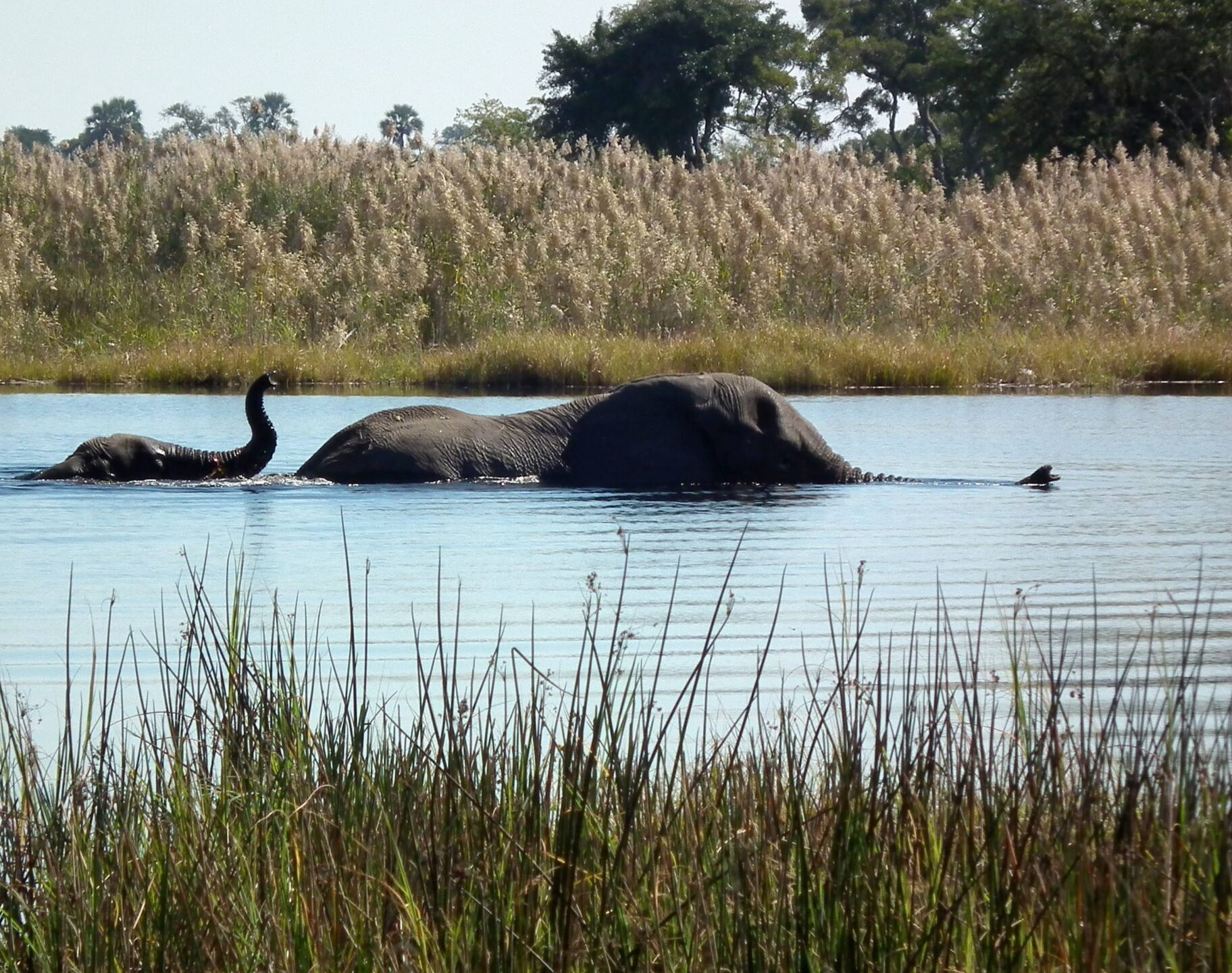
Chobe National Park
Chobe National Park is Botswana’s first and most ecologically rich national park. It is Botswana’s third largest park, behind Central Kalahari Wildlife Reserve and Gemsbok National Park, and contains one of the highest densities of game in all of Africa. This park is well-known for its lion population, which preys on elephants, usually calves or juveniles but also subadults. This national park is well-known for its spectacular animal watching. It has a high elephant population, but it also has many other favorites, like as zebras and lions. This national park is pricey to enter, which means fewer people and better animal watching.
Okavango Delta
The Okavango Delta (or Okavango Grassland) in Botswana is a marshy inland delta developed when the Okavango River meets a tectonic trough at an elevation of 930–1,000 m[3] in the center section of the Kalahari endorheic basin. All of the water that enters the delta evaporates and transpires, never entering a sea or ocean. The region was previously a part of Lake Makgadikgadi, a prehistoric lake that had mainly dried up by the early Holocene. The Moremi Game Reserve, a National Park, is located on the delta’s eastern side. The delta was named one of Africa’s Seven Natural Wonders. The Okavango River spreads here, becoming the world’s biggest inland delta. It is also one of the most spectacular wildlife areas in southern Africa. Because it is bordered by the Kalahari desert, its marshes and water systems attract creatures that travel thousands of kilometers. During the July and August floods, the delta triples in size.
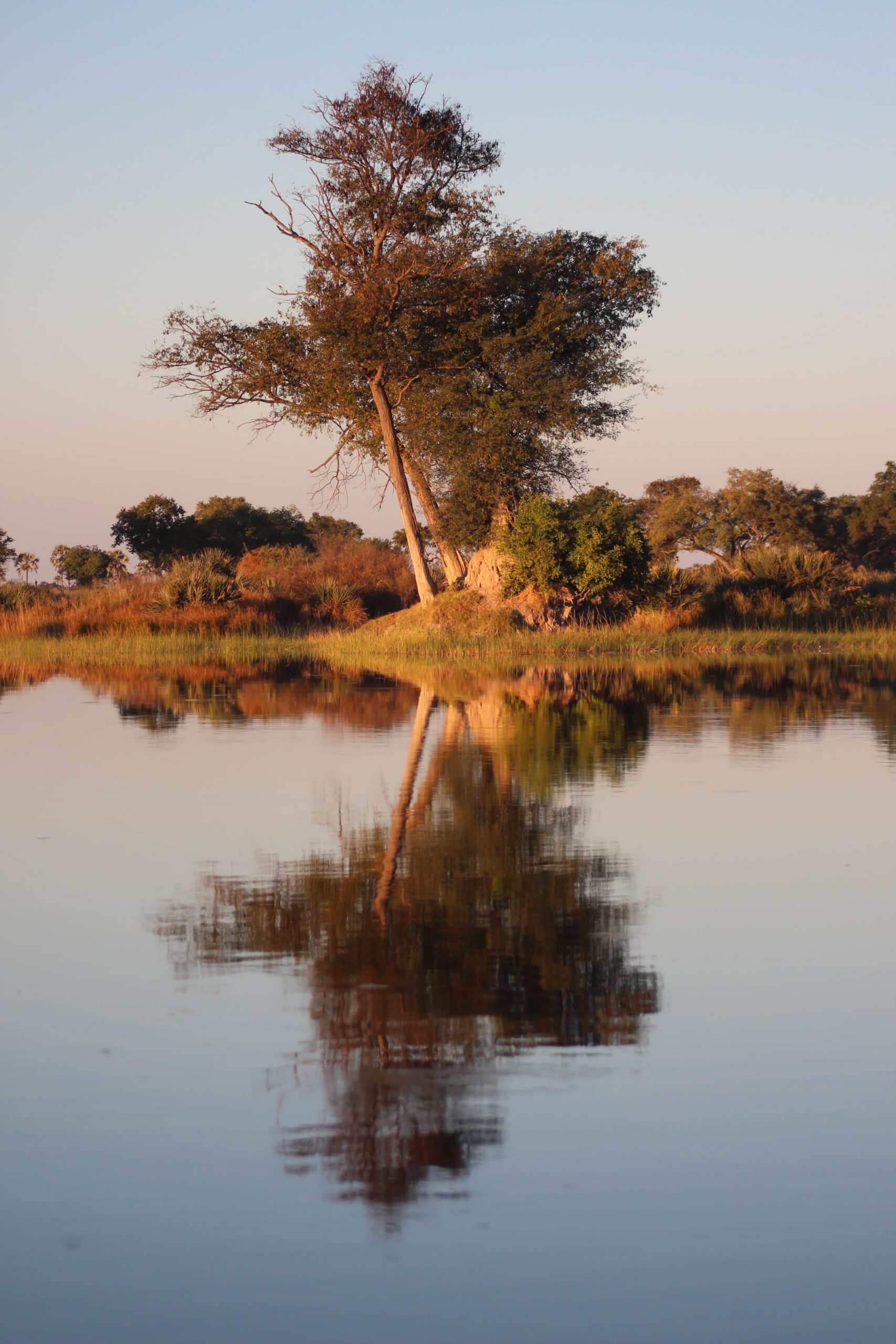
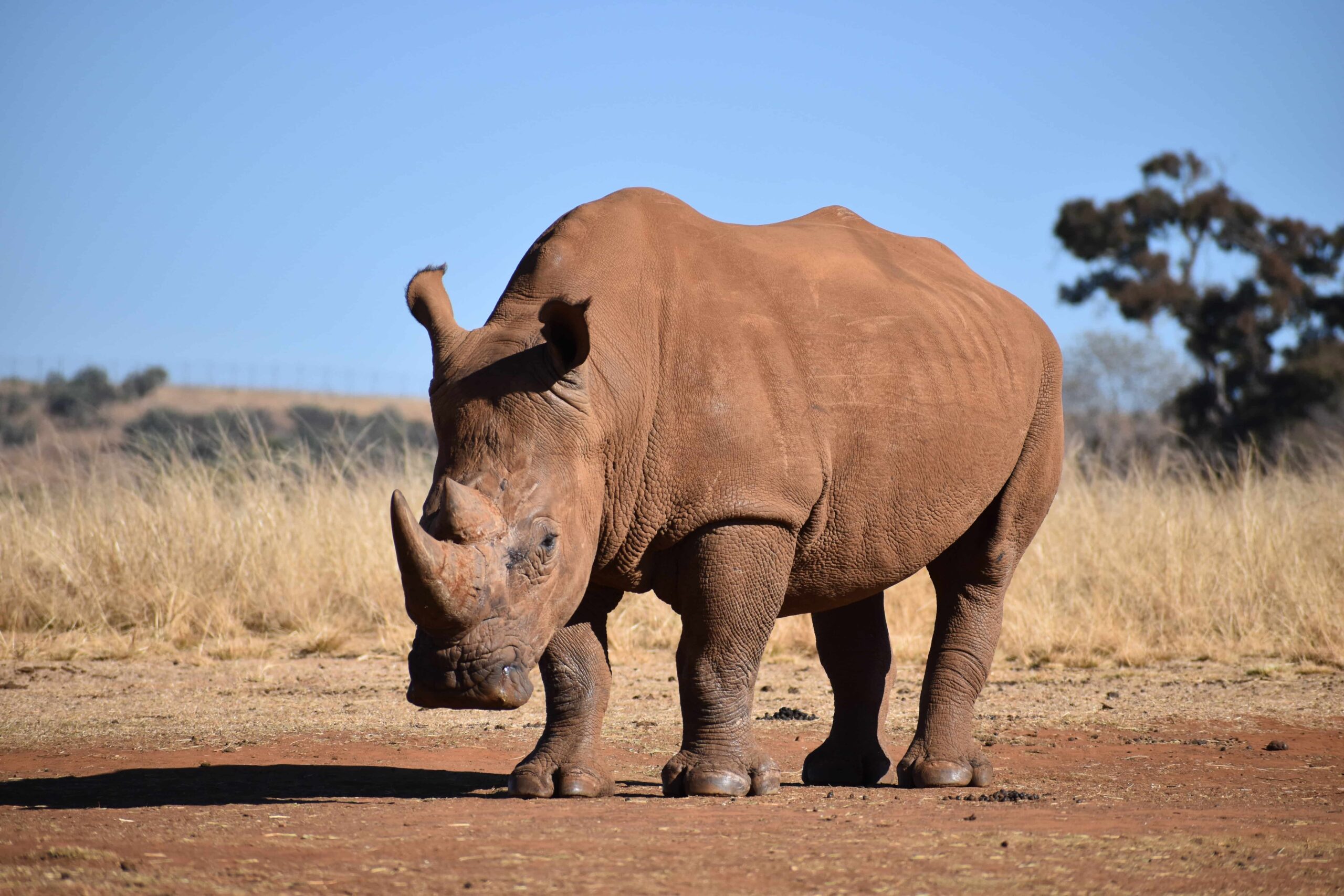
Khama Rhino Sanctuary
In Botswana, the Khama Rhino Sanctuary is a community-based wildlife initiative. The animal refuge was founded in 1992 to aid in the conservation of rhinoceros, the restoration of historic wildlife populations, and the provision of economic advantages to the local Botswana community through tourism and the sustainable use of natural resources. The sanctuary, which spans 8585 hectares of Kalahari Sandveld, is home to white and black rhinos, as well as over 30 other animal species and over 230 bird species.
Tsodilo Hills
The Tsodilo Hills are a UNESCO World Heritage Site in southern Africa, consisting of rock art, rock shelters, depressions, and caves. It was designated a World Heritage Site in 2001 due to its particular religious and spiritual value to indigenous peoples, as well as its unique record of human habitation spanning millennia. According to UNESCO, the monument has around 4500 rock drawings. The location is made up of three primary hills: Child Hill, Female Hill, and Male Hill.

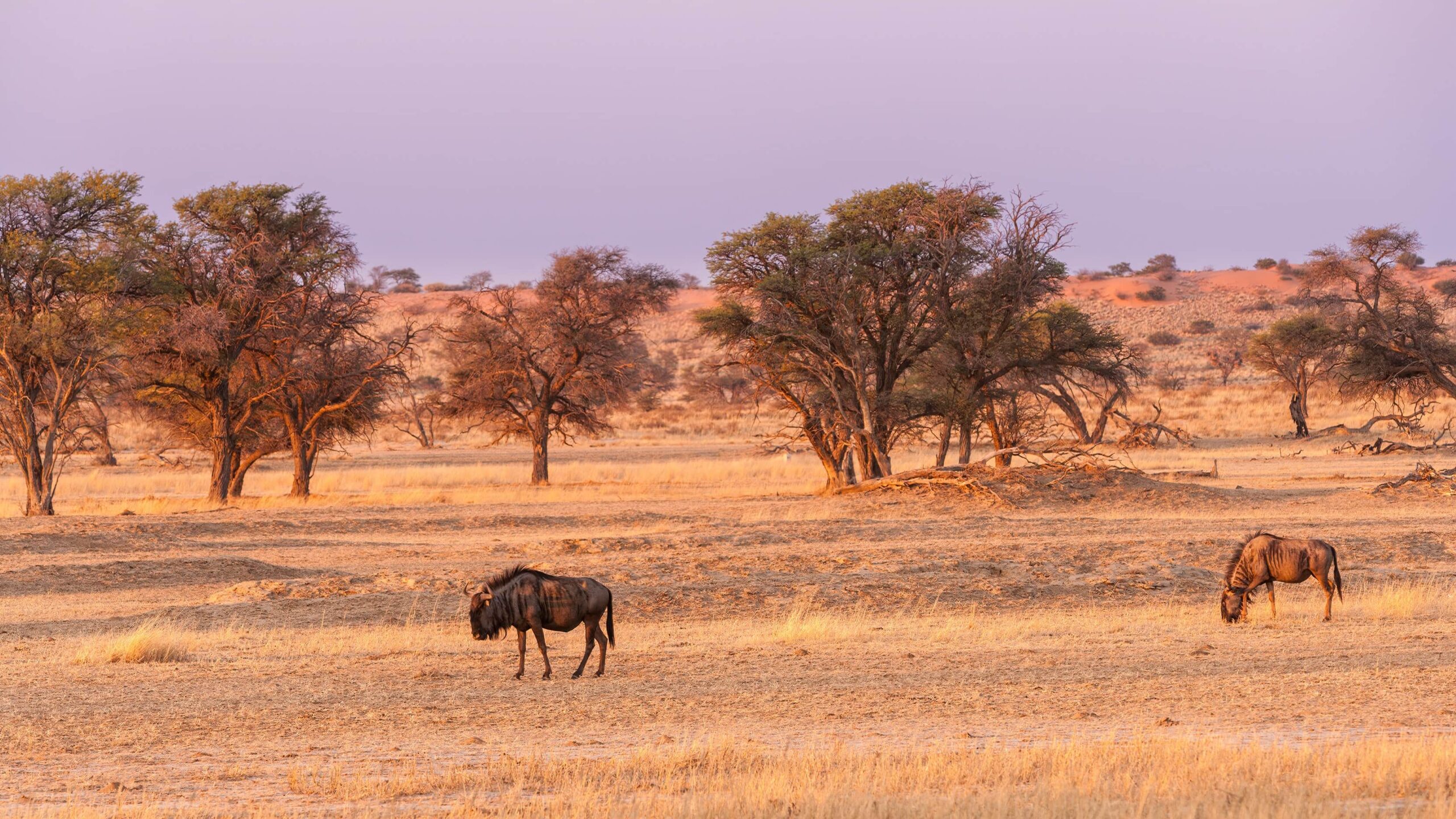
Kalahari
The Central Kalahari Game Reserve is a large national park in Botswana’s the Kalahari Desert. It was established in 1961 and encompasses 52,800 square kilometers, making it the second-biggest game reserve in Africa and the sixth in the world. The word Kalahari comes from the Tswana word Kgala, which means “great thirst.” This is due to the fact that the Kalahari sand entirely absorbs precipitation, leaving nothing behind on the surface.
7-day Itinerary in Botswana
Day 1
Arrive in Ghanzi from Namibia
The journey to Botswana from Zambia, Namibia, Zimbabwe, or South Africa can be almost the same, however, the entry areas and itinerary sequence will most likely be altered a bit depending on where you enter the country. Your Botswana overland safari begins in Windhoek, Namibia, where you will meet the rest of the group with the tour operator of your choice and begin driving east towards the Botswana border—a 7-hour drive. You will most likely stop for supplies in the Namibian town of Gobabis before crossing the Botswana border at the Buitepos station.
The border crossing is usually simple since your trip operator will handle all of the relevant documentation. When you cross the border into Botswana, you will notice a significant difference: there are no fences separating the road from private land, and it is not uncommon to find animals on the street. The rest of the day will be spent traveling across the Kalahari desert to the resort of your choosing near Ghanzi, where you will spend your first night in Botswana.


The San, commonly known as the Bushmen, operates several of the lodges. The lodges give job and empowerment possibilities for San people from neighboring communities, who have traditionally been at the bottom of the social ladder. You’ll most likely spend the night singing and dancing around a campfire while listening to traditional San bush legends. Botswana’s greatest welcoming celebration awaits you.

- Backpacker:
- Budget: Calvary Guest House
- Mid-range: Plot 19, Dqae Qare
- High end: Kalahari Arms Hotel, Grassland Bushman Lodgec
This section will be added shortly.
Day 2
Off to the Okavango Delta
After breakfast, you can spend a bit of time on a nature walk with San guides, learning all the traditional hunting-gathering living and perhaps spotting some wildlife – most likely impalas.
The rest of the day will be spent traveling to the Okavango Delta, Botswana’s primary tourist draw, for the next 6 hours. The Okavango River begins in the highlands of Angola and flows through Botswana before reaching the Indian Ocean and producing the world’s biggest inland delta in the center of the Kalahari desert.
The Okavango Delta resembles an inverted fan, with a “handle” pointing northwest — this is Botswana’s premier birding spot, known as the Okavango Panhandle.

- Backpacker: Guma Lagoon
- Budget:
- Mid-range:
- High end:
This section will be added shortly.

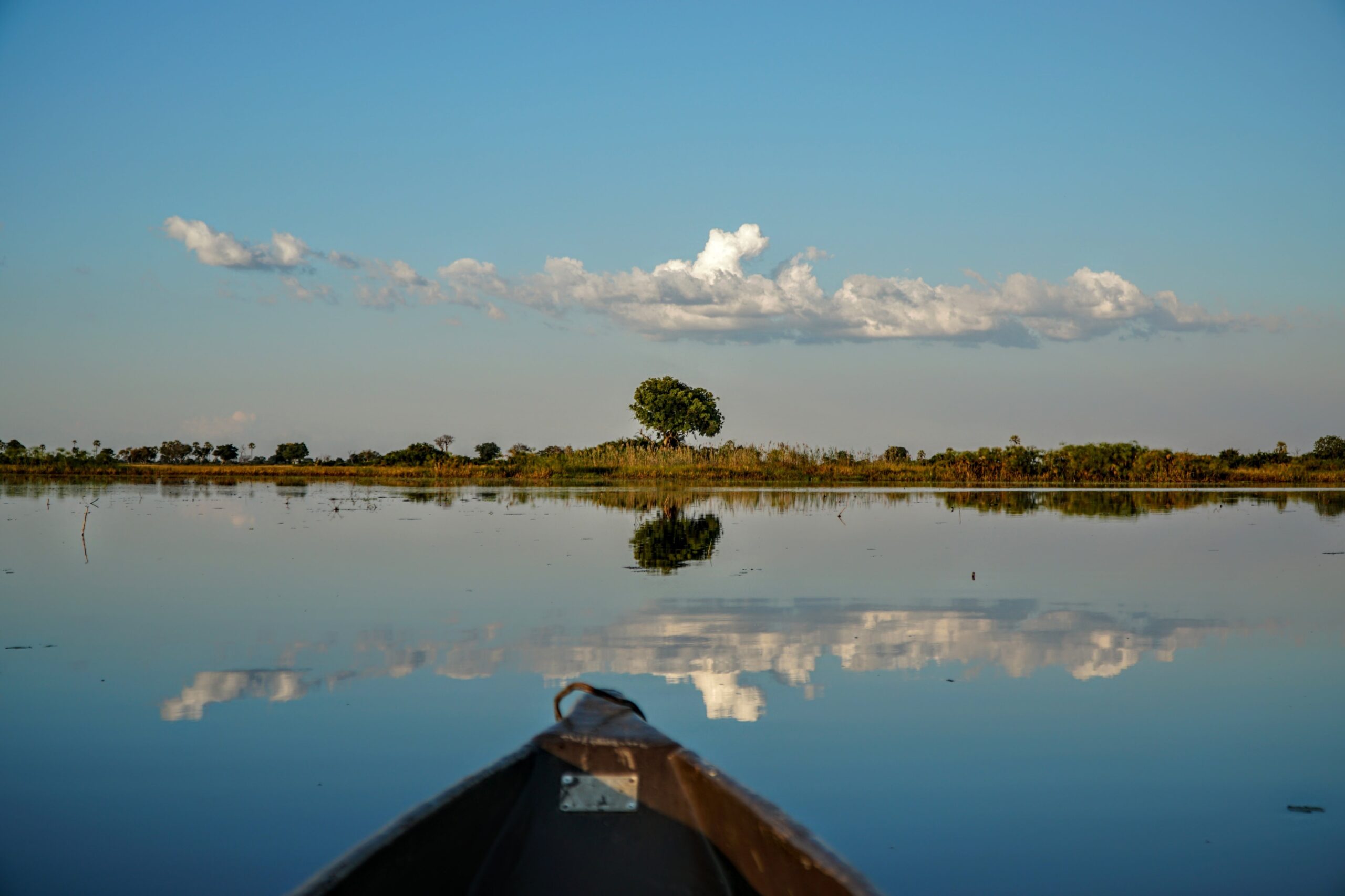
Day 3
Exploring the Delta
After a good breakfast, you will spend the entire day seeing the Okavango Delta, which is unquestionably one of the top things to do in Botswana! After weeks of being surrounded by rocks and sands, the arid desert area that dominates Namibia and Southern Botswana transforms into a world of lagoons, canals, and wetlands as soon as you reach the Okavango Delta—a wonderful change, especially if you have come from Namibia.
Mokoro safaris are the most popular tourist activity in the Okavango Delta. Mokoro are traditional dugout boats that are the finest way to navigate the tiny delta waterways surrounded by papyrus reeds and home to massive crocodiles lazing in the sun.
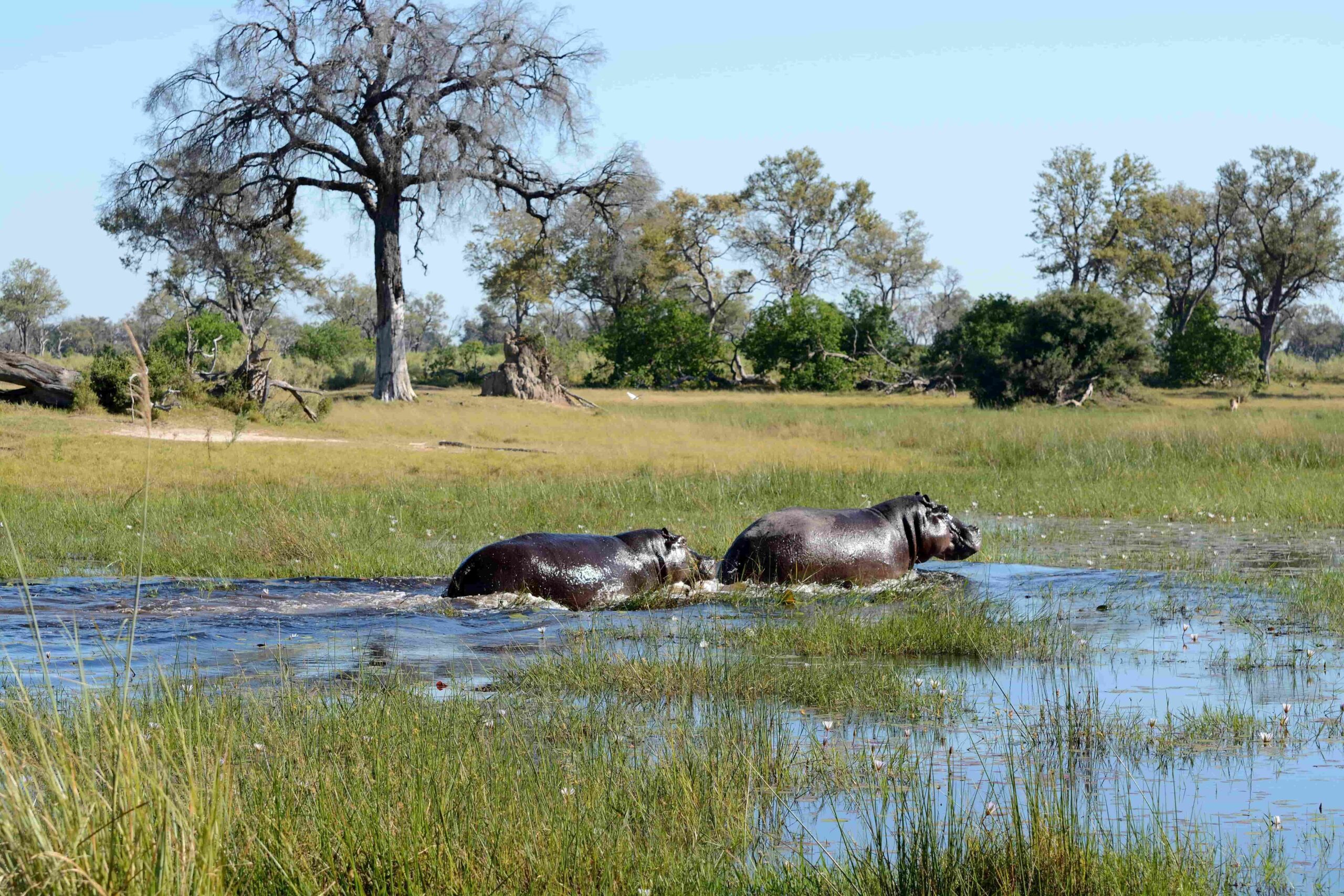
The Okavango Delta offers exceptional prospects for animal viewing, with the Big 5 commonly observed. The finest prospects are in the southern portion, around Maun and the Moremi natural reserve.
Another must-do in the Okavango is a helicopter or private plane ride above the Delta; if you have the funds for such an expedition, the views from the top are unrivaled.
Day 4
Off to Kwando
Okavango Delta to Kwando (Caprivi) – 400 km, 7 hours
Following two days in the Delta, you will head north and make a brief stop over the Namibian border at the Caprivi Sliver — a strip of territory stretching eastward from Namibia’s “mainland” into Zambia and Zimbabwe. You will stop for a brief game drive at Mahango Game Park, which is part of Bwambwata National Park, one of Namibia’s most isolated and least frequented parks.
You will also journey through the Tsodilo Hills, a revered Bushmen rock art site with some paintings dating back over 20,000 years. Paintings portray traditional dances, hunting scenes, and animals — another incredible activity to do in Botswana if you do have the time.
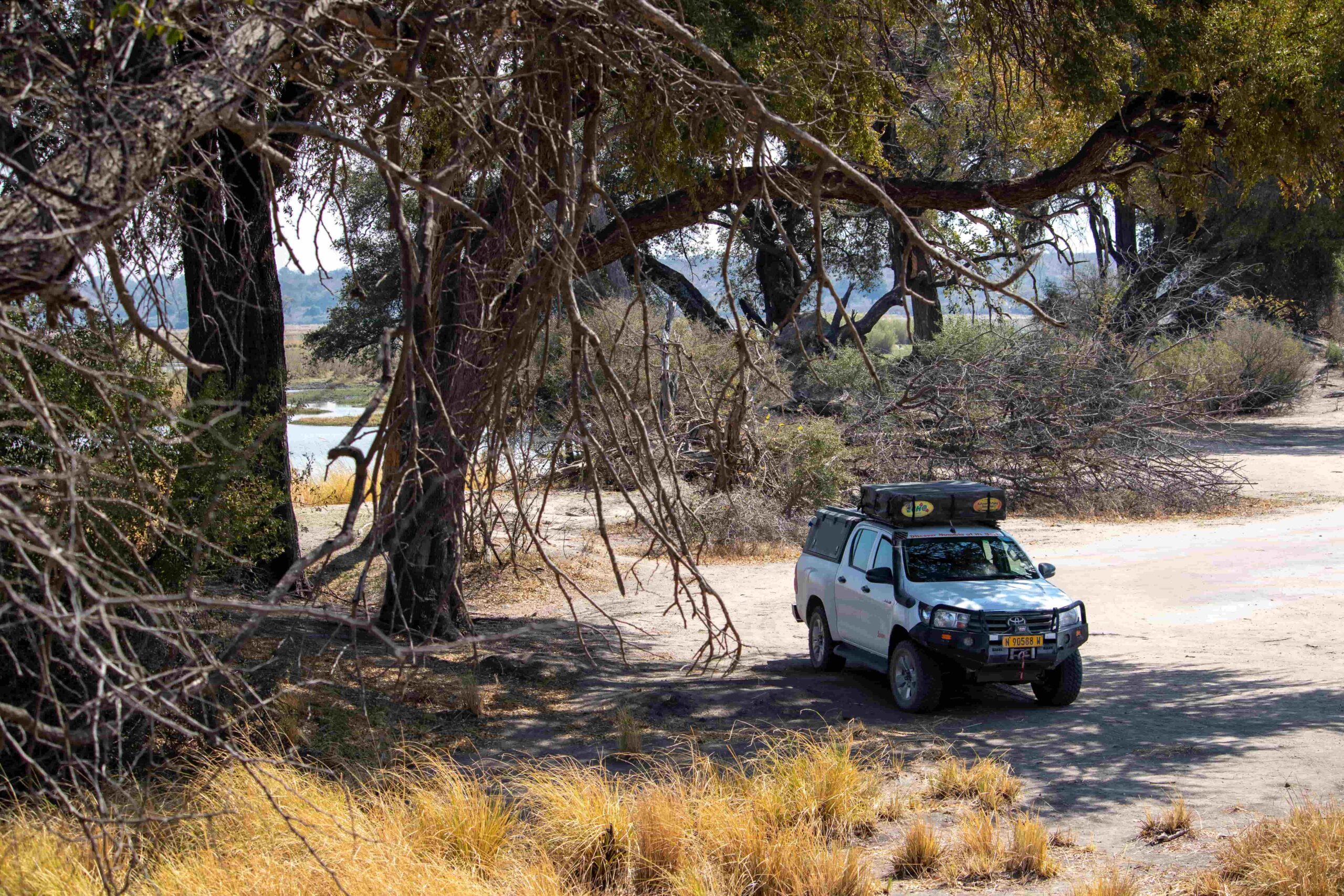

- Backpacker: Namushasha River Camping2Go, Camp Kwando (Tent Site)
- Budget: Mukolo Camp, Camp Kwando
- Mid-range: Gondwana Namushasha River Lodge
- High end: Lianshulu Lodge, The Namushasha River Villa

Days 5
Head to Chobe National Park
The beautiful Chobe National Park is your final stop in Botswana, where superb game viewing is almost guaranteed. The national park is huge, encompassing 11,000 square kilometers (half the area of Sinai, to give you an idea), and is divided into three sections.
- Backpacker: Sharwimbo River Camp
- Budget: Zambezi Mubala Camp, Muchenje Campsite & Cottages
- Mid-range: Protea Hotel by Marriott, Chobe Safari Lodge
- High end: Royal Chundu Island Lodge, Savute Elephant Lodge
Day 6
Exploring the Park
We strongly advise staying at least one complete day at Chobe National Park, if not more! Begin the day with a morning game drive, where you may view lions, elephants, zebras, giraffes, and even honey badgers!
Chobe has one of Africa’s biggest elephant herds, which is obvious as soon as you enter the national park — elephants are everywhere. There will be solitary old elephants, massive elephant herds headed by grizzled matriarchs, young elephants mock-charging in the jungle, small newborn elephants… you name it. If you adore elephants, Chobe should be at the top of the list of stuff to do in Botswana!

Along the Chobe River, you’ll encounter scores of elephants, especially after twilight, when most river excursions are scheduled and silhouette photos of the gentle giants are shot. Elephants congregate on the riverside to drink and are frequently spotted swimming across the river to reach the islands in the river’s middle, which have the softest grass. During your river safari, you will also encounter hippos, crocodiles, and other types of antelope, as well as the breathtaking sunset!
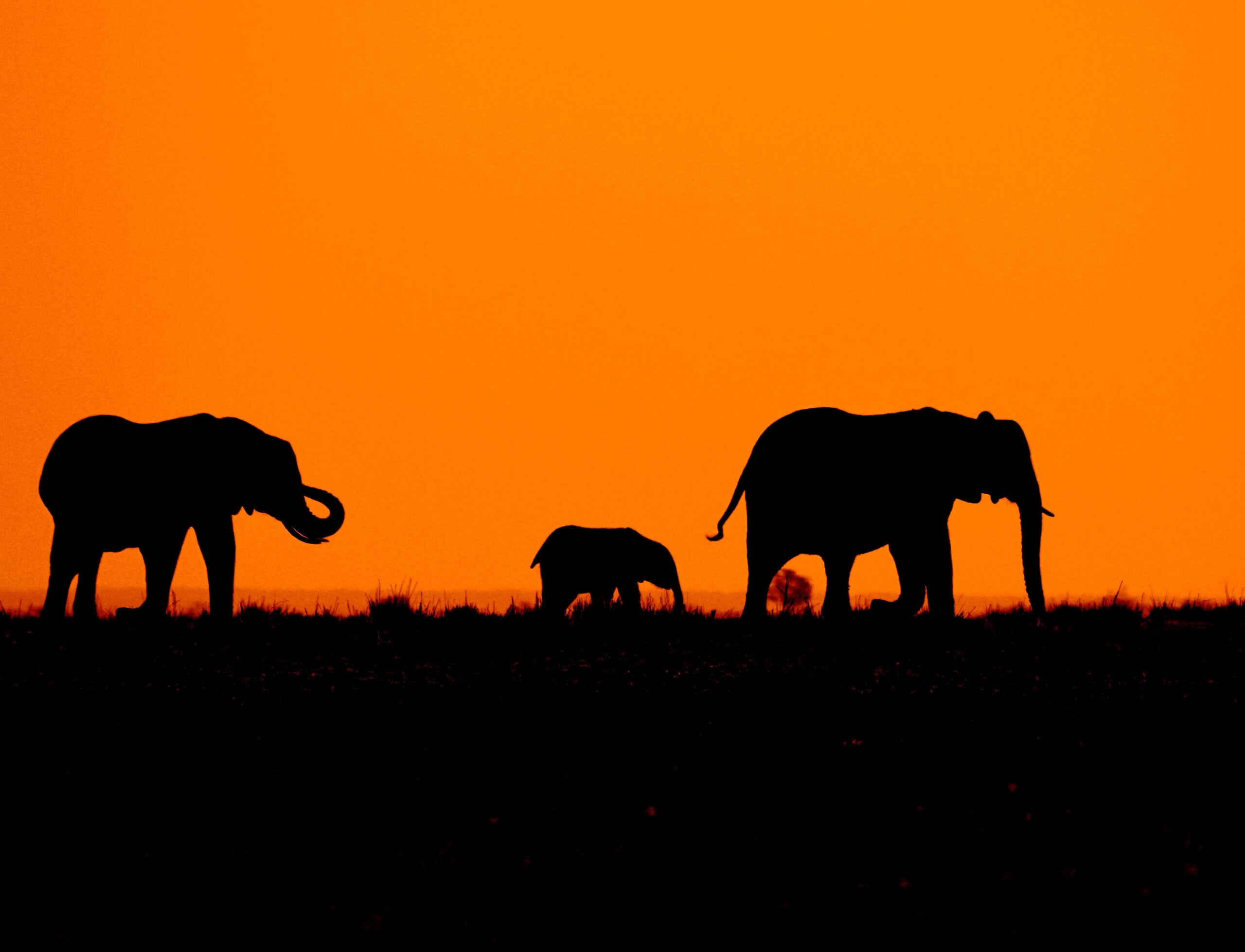


Day 7
Victoria Falls
The nearest city to Chobe National Park is Kasane, which is only 10 kilometers from the Zimbabwe/Zambia border at Kazungula and 80 kilometers from Victoria Falls.
By the end of your trip, you will begin your journey back to Gaborone, Botswana before the end of the day. If you have additional time to spend in Botswana, there are several choices to choose from. To begin with, if you have time before your trip, you can explore Gaborone. Consider including Linyanti Wetlands, Kubu Islands, Gcwihaba Caverns, Lake Ngami, or Makgadikgadi Pans Game Reserve if you have additional time in Botswana.
Day 8
Departure
Today marks your last day if your flight wasn’t the day before. Take your last strolls in Gaborone and start heading for the airport. Sir Seretse Khama Airport is 25 to 35 minutes away so make sure you keep that in mind when moving from your accommodation.

The Most Popular Food in Botswana
Botswana’s diet is similar to the rest of Southern Africa, while regional variances are widespread. Because the inhabitants take tremendous pleasure in their beef, it is frequently of very high quality. Lamb, mutton, fish, and chicken are other popular meats. Sorghum and maize are common grains, with wheat and rice imported from outside the nation. Watermelons are thought to have originated in Botswana, and they are abundant across the country.

Seswaa
Seswaa, also known as Chotlho, is a popular traditional food made by men for the strength required to produce the meal and consumed on exceptional or unusual occasions ranging from national days to weddings and even funerals. Meat, particularly beef, is fundamental to Tswana culture; it may be found at any gathering and is cooked in a variety of ways. Seswaa is made with slow-cooked meat, mainly beef but occasionally goat or lamb, with the most popular parts being the shoulder, rib, rump, and neck. Cooked in salted water and oil in a three-leg iron kettle, called potjies, until the meat is cooked and mashed. The meal is occasionally gradually simmered with onion and pepper.

Vetkoek
Vetkoek is Afrikaans for “meat fat cake.” This bread filled with ground beef is popular throughout Africa. It’s similar to Johnny Cake, a classic Caribbean treat. Vetkoek can be filled with minced meat or chicken stew, or it can be served as a sweet snack with honey, jam, or syrup. When you arrive in Botswana, you may easily get it from takeout restaurants or street vendors. This traditional meal is popular at special festivals and cultural events throughout Southern Africa.
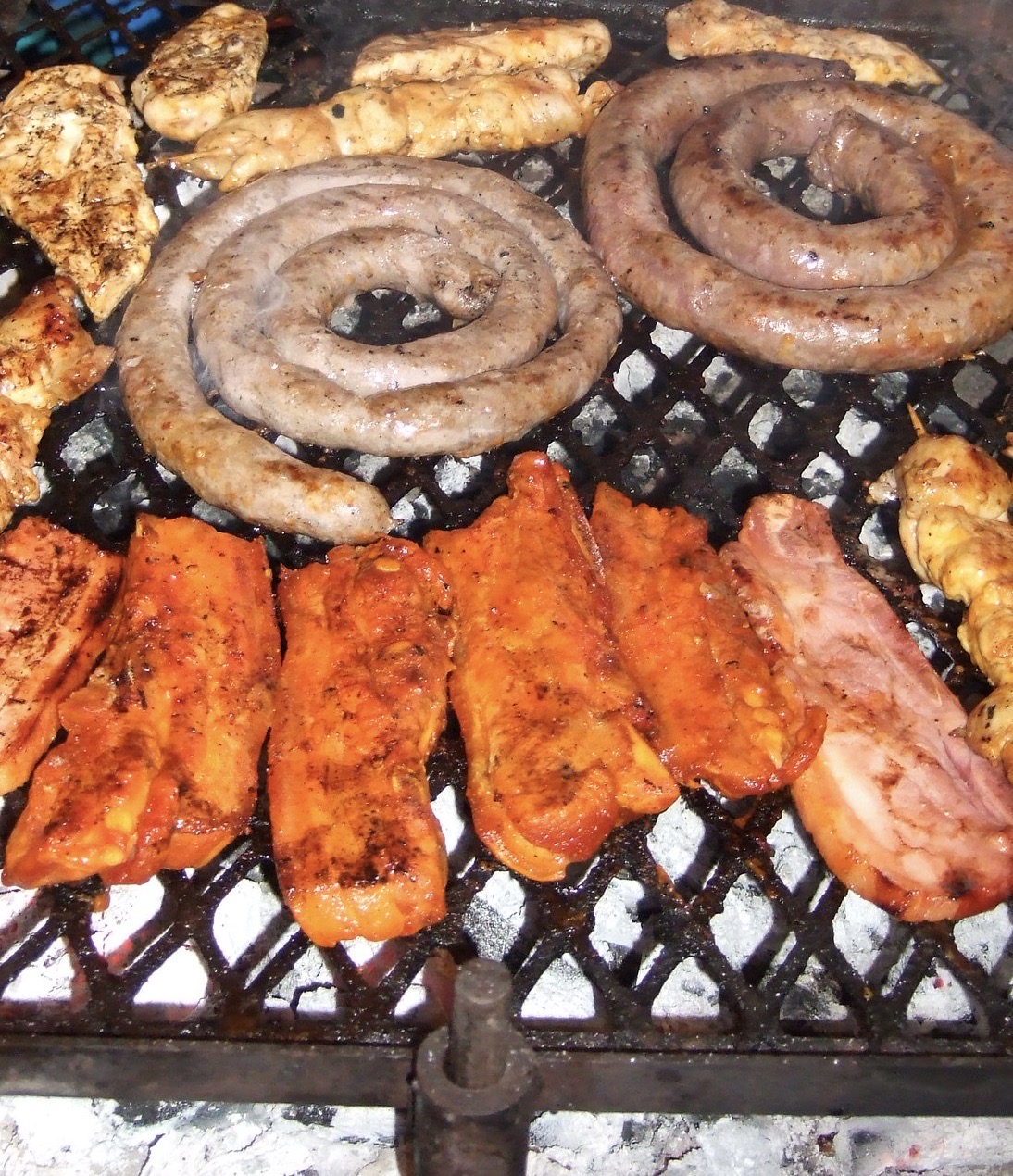
Braai Meat
Braai meat is a cuisine that you should be familiar with if you’ve been to Southern Africa for a long. It is simply meat cooked over coals, which makes it barbeque, but each person does it differently. Among the meats utilized are chicken, shellfish, lamb, and beef, in various cuts and combinations with vegetables. The beef is marinated in a flavorful marinade of salt, pepper, and native spices. It is frequently served with garlic, tomato, onion relish, and a variety of other sides. This meal is popular as a delicacy at large celebrations in Botswana, and it even has its own holiday, National Braai Day. Braai meat favorites include boerwors (farmer’s sausage) and lamb chops.

Bogobe
Bogobe, locally known as Slap-Pap, is a popular type of porridge in Botswana and is regarded as the country’s national food. It is made by boiling millet, maize, or sorghum powder in boiling water. The flour is mixed with boiling water to produce a soft paste, which is then cooked and occasionally sweetened. Bogobe can be made in a variety of ways, including an unsweetened version that is frequently eaten with meat, such as Seswaa. Bogobe Jwa Legala and Bogobe jwa Lerotse are the two most popular variations.

Mogatla
Mogatla, which translates to “oxtail” in Setswana, is a famous Botswana dish. This meal is inspired by the cattle growing and selling tradition of Botswana. Oxtail takes longer to cook since it includes half of its mass in bones and has firmer meat, but as the juices and flavors of tomatoes, onions, broth, and bay leaves seep in and are absorbed by the meat, the result is a superb stew that can be devoured in seconds. Mogatla is a tasty Botswana lunch dish that you and your family will love on your Botswana trip.
What's the Travel Budget for Botswana?
Flights
- Flights start at roughly $80 from nearby countries. Tickets however on average cost around $700 and can cost way more depending on which class and from which country you depart from.
Accommodation
- Nomad Backpacking style travelers can expect to spend around $100 for a week
- Budget travelers can expect to spend around $210 for a week
- Mid-range travelers can expect to spend around $420 for a week
- Luxury travelers can expect to spend around $720 for a week
Food Budget (Three meals and drinks)
- Nomad Backpacking style travelers can expect to spend around $9 per person per day
- Budget travelers can expect to pay around $15 per person per day
- Mid-range travelers on average would cost $20 to $25 per person per day
- Luxury travelers can expect to pay around $30 to $45 per person per day
Overall Budget Styles (Not including Flights, Tours, Transportation, or Car Rental)
- Nomad Backpacking style travelers can expect to spend roughly $180 for a week
- Budget travelers can expect to spend close to $330 for one person for a week
- Mid-range travelers can expect to spend approximately $650 for one person for a week
- Luxury travelers can expect to spend around $1,100 for one person for a week
Flights
- Flights start at roughly $80 from nearby countries. Tickets however on average cost around $700 and can cost way more depending on which class and from which country you depart from.
Accommodation
- Nomad Backpacking style travelers can expect to spend around $100 for a week
- Budget travelers can expect to spend around $210 for a week
- Mid-range travelers can expect to spend around $420 for a week
- Luxury travelers can expect to spend around $720 for a week
Food Budget (Three meals and drinks)
- Nomad Backpacking style travelers can expect to spend around $9 per person per day
- Budget travelers can expect to pay around $15 per person per day
- Mid-range travelers on average would cost $20 to $25 per person per day
- Luxury travelers can expect to pay around $30 to $45 per person per day
Overall Budget Styles (Not including Flights, Tours, Transportation, or Car Rental)
- Nomad Backpacking style travelers can expect to spend roughly $180 for a week
- Budget travelers can expect to spend close to $330 for one person for a week
- Mid-range travelers can expect to spend approximately $650 for one person for a week
- Luxury travelers can expect to spend around $1,100 for one person for a week
Flights
- Flights start at roughly $80 from nearby countries. Tickets however on average cost around $700 and can cost way more depending on which class and from which country you depart from.
Accommodation
- Nomad Backpacking style travelers can expect to spend around $100 for a week
- Budget travelers can expect to spend around $210 for a week
- Mid-range travelers can expect to spend around $420 for a week
- Luxury travelers can expect to spend around $720 for a week
Food Budget (Three meals and drinks)
- Nomad Backpacking style travelers can expect to spend around $9 per person per day
- Budget travelers can expect to pay around $15 per person per day
- Mid-range travelers on average would cost $20 to $25 per person per day
- Luxury travelers can expect to pay around $30 to $45 per person per day
Overall Budget Styles (Not including Flights, Tours, Transportation, or Car Rental)
- Nomad Backpacking style travelers can expect to spend roughly $180 for a week
- Budget travelers can expect to spend close to $330 for one person for a week
- Mid-range travelers can expect to spend approximately $650 for one person for a week
- Luxury travelers can expect to spend around $1,100 for one person for a week
Flights
- Flights start at roughly $80 from nearby countries. Tickets however on average cost around $700 and can cost way more depending on which class and from which country you depart from.
Accommodation
- Nomad Backpacking style travelers can expect to spend around $100 for a week
- Budget travelers can expect to spend around $210 for a week
- Mid-range travelers can expect to spend around $420 for a week
- Luxury travelers can expect to spend around $720 for a week
Food Budget (Three meals and drinks)
- Nomad Backpacking style travelers can expect to spend around $9 per person per day
- Budget travelers can expect to pay around $15 per person per day
- Mid-range travelers on average would cost $20 to $25 per person per day
- Luxury travelers can expect to pay around $30 to $45 per person per day
Overall Budget Styles (Not including Flights, Tours, Transportation, or Car Rental)
- Nomad Backpacking style travelers can expect to spend roughly $180 for a week
- Budget travelers can expect to spend close to $330 for one person for a week
- Mid-range travelers can expect to spend approximately $650 for one person for a week
- Luxury travelers can expect to spend around $1,100 for one person for a week
If you want to know what to pack, read this list below:
- This is a conservative African country that can get extremely cold, dress accordingly
- Raincoat or Light Waterproof Jacket
- Hiking Boots or Sturdy Sneakers (Shoes You Don’t Mind Getting Wet)
- Sunscreen
- Insect Protection – Repellent and Clothing
- Sunglasses and Sun Hat
- Water Shoes
- Beach Towels/Sarong
- Dry Bag
- Money Belt or Cross Bag
- Portable Medical Kit
- Flashlight or Headlamp
- Copies of your passport.
- Get all the needed vaccinations before traveling
- A power bank is a must in any travel.
- Always have some cash with you just in case there are no ATMs and if you are dealing with a business that solely accepts cash
- Get yourself an adapter for your gadgets
- 1 toothbrush
- 1 tube of toothpaste
- 1 razor
- 1 package of dental floss
- 1 small bottle of shampoo
- 1 small bottle of shower gel
- 1 towel
- Deodorant
- Band-Aids
- Hydrocortisone cream
- Antibacterial cream
- Earplugs
- Tylenol
- Hand sanitizer (germs = sick = bad holiday)
- A key or combination lock
- Zip-lock bags
- Plastic bags (great for laundry)
- Universal charger/adaptor
- LifeStraw (A water bottle with a purifier)
- 1 dry shampoo spray & talc powder
- 1 hairbrush
- Makeup you use
- Hairbands & hair clips
- Feminine hygiene products
Clothing For Boys
- 1 pair of jeans or khaki pants
- 1 pair of shorts
- 1 bathing suit
- 5 T-shirts
- 1 long-sleeved T-shirt
- 1 pair of flip-flops
- 1 pair of sneakers
- 6 pairs of socks
- 5 pairs of boxer shorts
Clothing For Girls
- 1 swimsuit
- 1 sarong
- 1 pair of stretchy jeans
- 1 pair of leggings
- 2-3 long-sleeve tops
- 2-3 T-shirts
- 3-4 spaghetti tops
- 1 light cardigan
Want to plan your own trip, here are some of the best resources that can help you
- Skyscanner – They search small websites and budget airlines that larger search sites tend to miss. They are hands down the number one place to start.
- Momondo – This is another favorite flight search engine because they search such a wide variety of sites and airlines. Always check here too.
- Booking.com – The best all-around booking site that constantly provides the most affordable and lowest rates. They have the widest selection of budget accommodation.
- Couchsurfing – This website allows you to stay on people’s couches or spare rooms for free. It’s a great way to save money while meeting locals who can tell you the ins and outs of their city. The site also lists events you can attend to meet people (even if you’re not staying with someone).
- Intrepid Travel – If you want to do group tours, go with Intrepid. They offer good small group tours that use local operators and leave a small environmental footprint.
- Grassroots Volunteering – For volunteering, Grassroots Volunteering compiles a list of good local volunteer organizations that keep the money within the community.
- Get Your Guide – Get Your Guide is a huge online marketplace for tours and excursions. They have tons of tour options available in cities all around the world, including everything from cooking classes, walking tours, street art lessons, and more! It has the world’s largest collection of things to do with more than 30,000 activities in 7500 destinations.
- SafetyWing – Safety Wing offers convenient and affordable plans tailored to digital nomads and long-term travelers. They have cheap monthly plans, great customer service, and an easy-to-use claims process that makes it perfect for those on the road.
- Trip Advisor: Check the reviews and then book your accommodation. TripAdvisor is where you go when you want to compare prices with multiple accommodation providers.
- VRBO: is the main search engine to use when you are looking for a home or apartment rental. It can sometimes be cheaper than hotels and it is the best way to stay in areas that offer a more local feel.
- Hostelworld: With one of the largest databases of hostels in the world, Hostelworld is the go-to site when you are looking for budget accommodation.
- Rome 2 Rio: If you want to see how to get somewhere by plane, train, bus, ferry, or car Rome2Rio lays it all out for you as well as related costs.
- World Nomads Insurance: When traveling you should always have travel insurance. We have found the best bang for your buck is by far World Nomads.
Final Thoughts on Botswana
The country of Botswana offers a lot of rich cultures which is evident throughout the country, with its past, lovely architecture, welcoming people, and beautiful nature making it so appealing and even scenic thanks to this mix. This only means that Botswana is a country worth visiting. From the lovely reserves to the carefully placed lodges and natural marvels and beautiful landscapes, the beauty of Botswana is a panoramic one. Would you visit Botswana?
Have you been to Botswana? Let us know how your trip was in the comments below.
1 Comment
Great posts, Botswana is on my top list to visit!